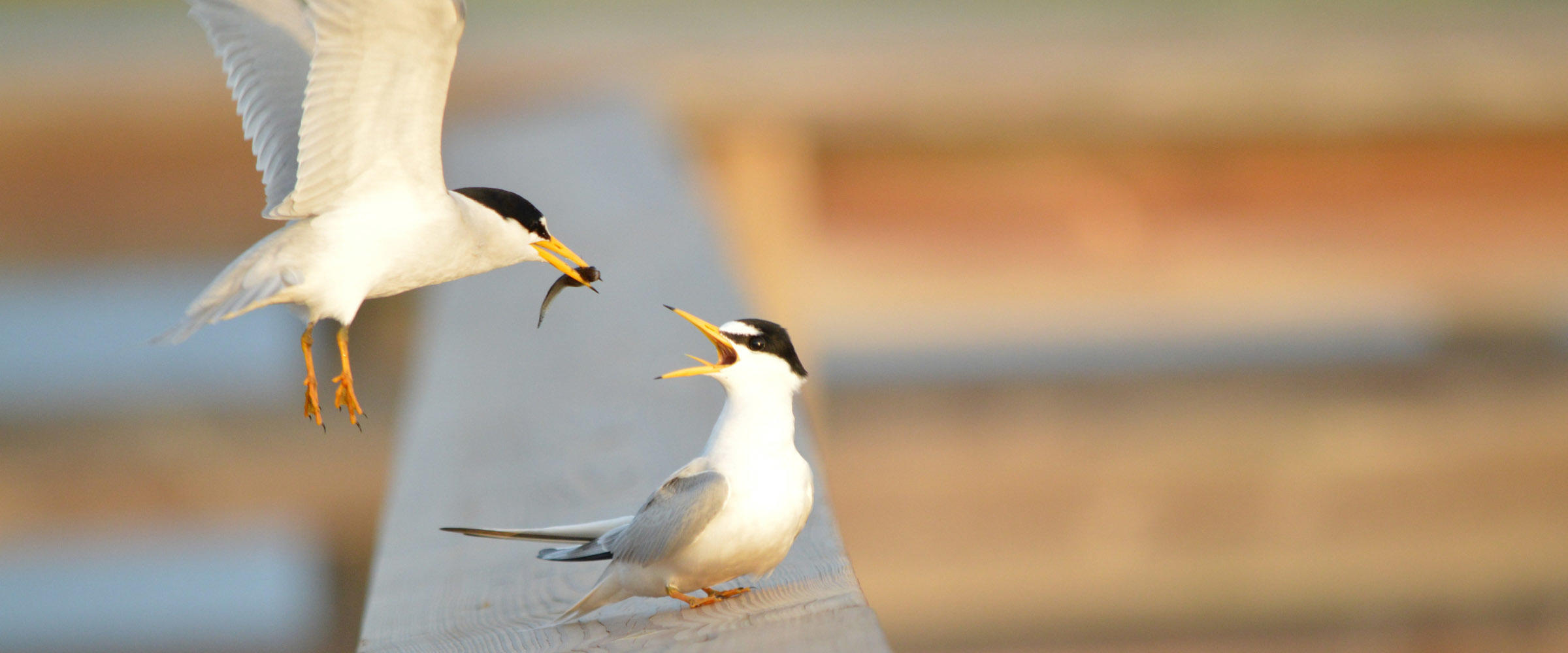Just like Floridians, Florida’s coastal birds demonstrated perseverance and persistence last year. Audubon support and stewardship gave the birds a fighting chance despite extreme weather, disappearing habitat, and crowded beaches. Biologists report that 2017 was an encouraging breeding season for state threatened Least Terns and Black Skimmers, especially in Southwest Florida. The diversity of Florida’s long-legged wading birds fared well, especially in West Central Florida. Volunteer stewardship programs protected many beach sites from disturbance with rewarding results. Unfortunately, Snowy Plover and American Oystercatcher nests struggled, largely due to predation and catastrophic weather.
Stormy Season
Tropical weather was especially challenging for nesting in Florida’s western Panhandle. Birds persistently renested and, chaperoned by Audubon stewards and volunteers, fledged chicks in September and October. Immediately after storms struck Florida, brave Audubon volunteers and biologists took to the beaches to survey damage and report on how the birds were doing. Sadly, chicks and eggs were lost. But some beaches received restorative overwash, refreshing habitat and making it ideal for nesting in 2018. Powerful Hurricane Irma swept Florida’s coasts, reshaping and eroding shorelines in ways that may affect nesting success for years to come. Read more about Hurricane Irma’s impact on Florida’s habitats at FL.Audubon.org/Irma.
Growing Conservation Capacity
Thanks to the Gulf Environmental Benefit Fund and generous donors, Audubon Florida’s coastal program nearly doubled in 2017. The expanded team allows Audubon to meet the protection and stewardship challenges of beach, rooftop, and tree-nesting birds along Florida’s Gulf Coast and Northeast Florida’s Atlantic Coast. Audubon’s 12 full-time and 13 seasonal staff oversee:
• Beach, rooftop, and mangrove island site and habitat management,
• Disturbance monitoring for predators and human intrusion,
• Year-round bird surveys,
• Volunteer-supported stewardship programs, with more than 1,000 volunteers and
• Coordination with partners at 283 beach and rooftop nesting sites.
In this report, enjoy the updates focusing on Florida’s coastal waterbirds and Audubon’s work to protect them. Development so dramatically alters much of Florida’s coasts that active intervention by Audubon is required to recover and protect coastal birds and their habitats. Your support makes this possible. Thank you for helping Audubon strengthen our coastal stewardship network to ensure that Florida’s most important habitats and the amazing birds that depend on them will benefit long into the future.






